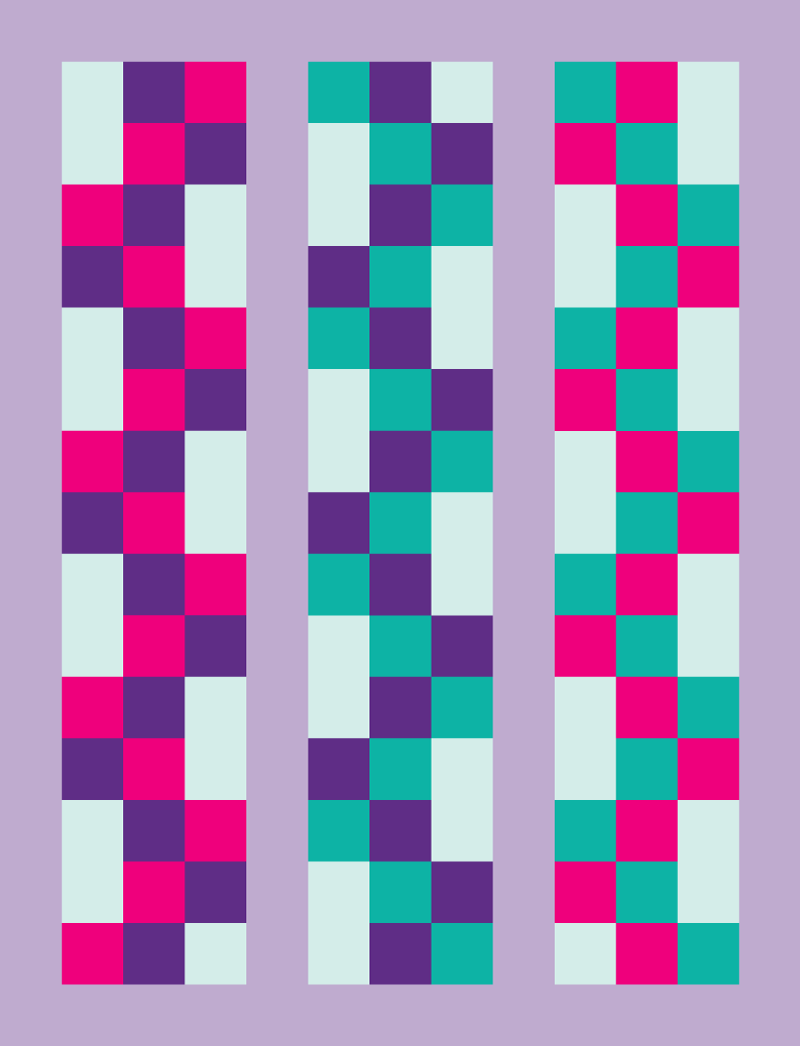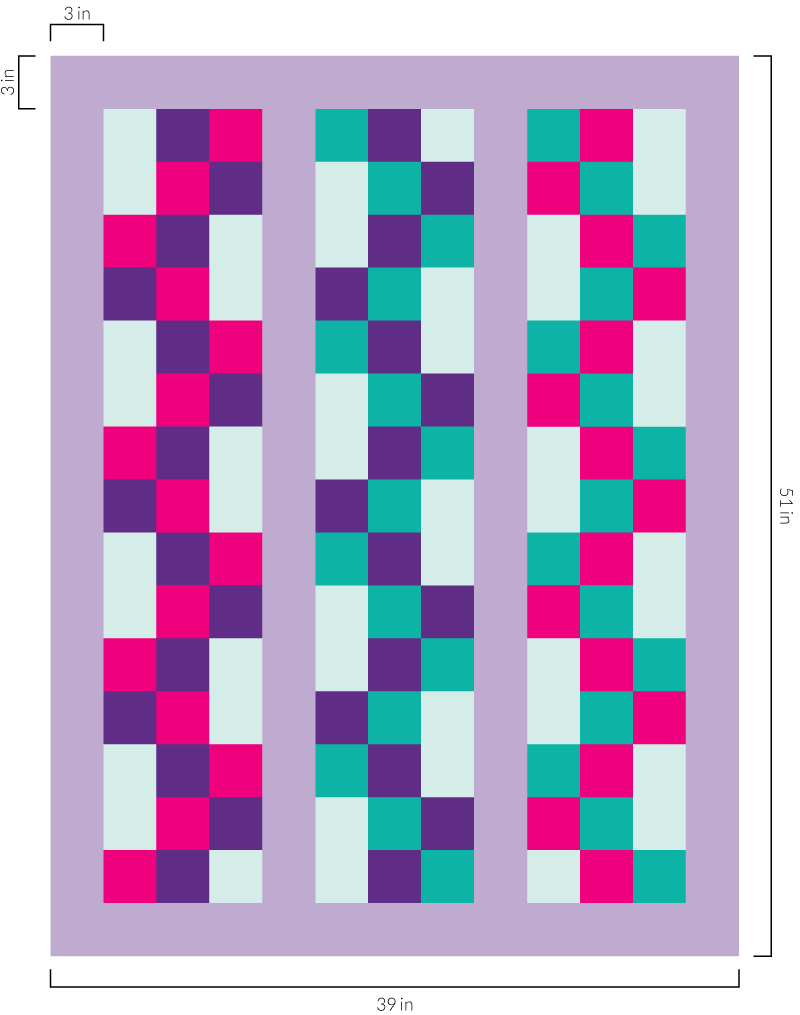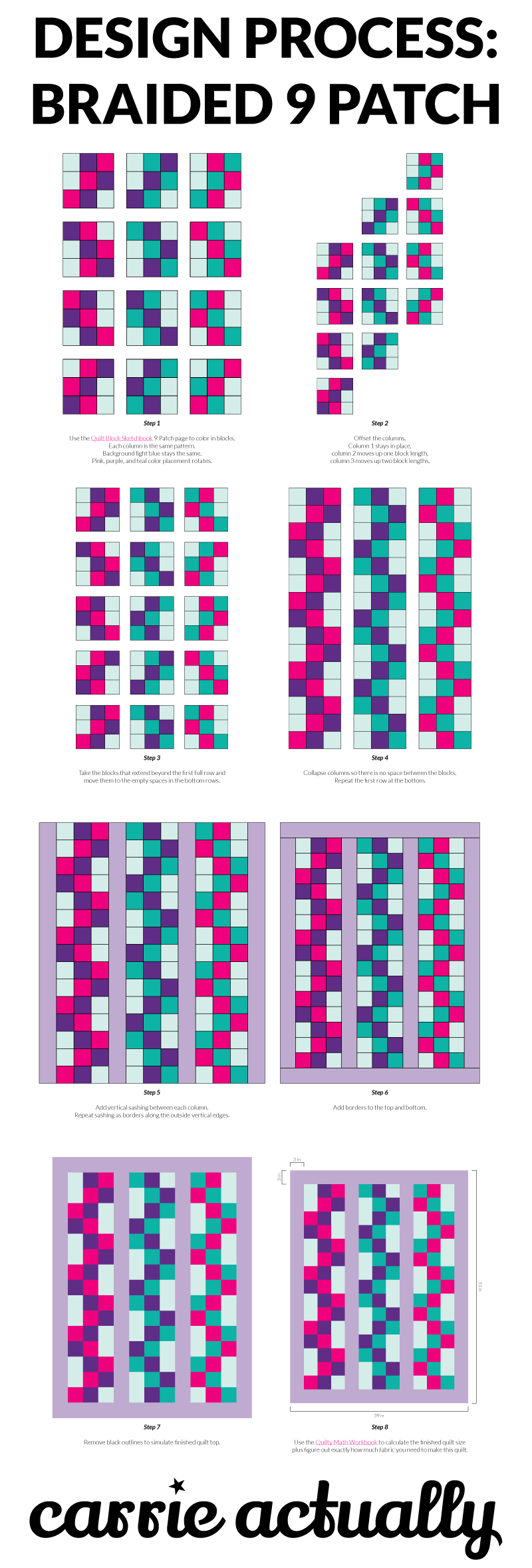Pretty much every year, my New Year's resolution is a variation of I’m not going to start any new craft projects until I finish all the ones I already started.
Every year I fail at keeping that resolution.
This year my resolution is to be way more strategic about the projects I do start.
Have a plan. Buy only the right amount of the right supplies. Stop spending money on supplies that I’m not going to use and stop having to figure out where and how to store those supplies I’m not going to use.
The Quilty Math Workbook is the key to figuring out exactly how much fabric and batting I need for each of my current and future quilt projects.
The Quilty Math Workbook consolidates all the information I previously had to look up over and over again for figuring out what size my quilt pieces need to be, how much seam allowance I need to add to each of those pieces, and how much yardage or how many fat quarters I need to be able to cut out all of those pieces.
It’s perfect for finishing current projects but calculating how much fabric I need for sashing and borders, what size batting I need to purchase for my quilt top, the most efficient way to piece together a backing and how much fabric I need to buy to do that, and how much fabric I need to purchase for binding.
It drives me crazy when I buy someone else’s pattern or find a lovely free pattern online and it doesn’t specify how much fabric I need to make the quilt. A couple years ago, before I created the Quilty Math Workbook, I asked a quilt designer how much fabric I needed to buy to make her sampler quilt that was designed to be made with scraps (which I just didn’t have enough of that I liked), I ended up buying more than twice the amount of fabric I needed. And I don’t really want to make two of that quilt. Especially considering I still haven’t finished the first one. The Quilty Math Workbook can be used to figure out how much fabric you need to buy for any geometric quilt pattern composed of squares, rectangles, and triangles in whatever number and combination of fabrics you can imagine.
The Quilty Math Workbook also has graph paper worksheets I created to help me think through the process of creating block designs, arranging those blocks into rows that I can sew together, and adding sashing and borders as desired.
I’ll also be using the Quilty Math Workbook to help me develop my next ebook.
Announcing my next product: The Half and Half Quilt Pattern + Ebook
My next product, which you can expect to be released in early 2016, is going to be all about half square triangles.
There are a few key points that make this not just your average half square triangle quilt pattern.
All of the half square triangle units I’ll be working with will be half white and half color + print. I can spend hours arranging my fabric into pairs to be sewn together but somehow I always get them mixed up myself or my toddler grabs a handful so he can “help”. If I always sew together white and color when making my half square triangle units, it’s really easy to get every single one right the first time.
I’ve culled through thousands of classic quilt blocks to select and adapt blocks to create a gallery of appealing designs that are composed exclusively of these easy to sew half square triangle units that are half white and half color. The gallery will include 130 of the prettiest block designs you can create with my half and half units and nothing else. They’ll all use the same units and same amount of fabric so it’s easy to pick and choose. It’s also easy to change your mind and keep going with your quilt.

















